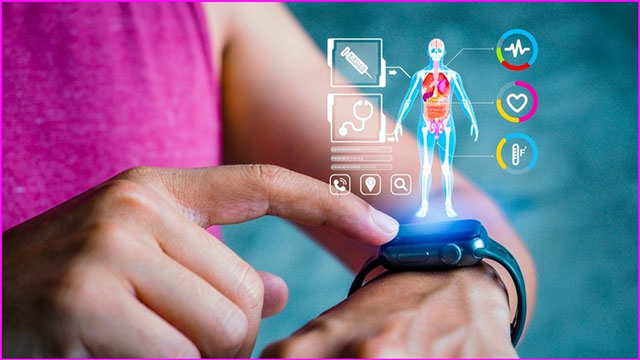AI system uses smartwatches to detect potential health risks early with high accuracy
Researchers from Sapienza University of Rome have developed an anomaly detection system called AI on the Pulse, designed for continuous monitoring of patients — especially those with neurodegenerative diseases.
The system combines data from wearable sensors (like smartwatches) and environmental sensing technologies with an advanced time-series processing AI model called UniTS. While it can be used on common devices like smartwatches, AI on the Pulse's capabilities go beyond what these devices typically offer.
Superior efficiency compared to current methods
According to the research team, AI on the Pulse can automatically learn each patient's unique physiological and behavioral habits. Thanks to that, it can detect even very small changes that can be early warning signs of health risks.
What's remarkable is that this system isn't just theoretical — it's already been implemented in a real-world home care setting, called @HOME.
AI on the Pulse, using the UniTS model, outperformed 12 other state-of-the-art anomaly detection methods, with an improvement of about 22% in F1-score (a measure of accuracy).
The system also demonstrated stable performance on both dedicated medical devices (like ECGs) and consumer devices (like smartwatches).
In the study, the team tested data from six elderly patients with early-stage neurological disease. A geriatrician evaluated the system's alerts and determined that 93.75 percent were accurate, with only 6.25 percent due to sensor error. The alerts were judged by the physician to be of real clinical significance.

Learn individual physiological and behavioral habits
A major challenge was the lack of data in long-term follow-up, which the team overcame using interpolation.
Thanks to its ability to adapt to each patient, the system recorded only 32 alerts over the course of 3 months, limiting false alarms in people with abnormal but stable indicators.
AI on the Pulse collects a variety of personal data such as heart rate, sleep stages, breathing rate, location in the room. The goal is to provide real-time alerts so that medical staff or caregivers can intervene right at home.
In addition, the system also uses a large language model (LLM) to explain the results in an understandable way for medical staff.
In the future. The team wants to expand the deployment and move towards clinical application. The source code for AI on the Pulse is now shared on GitHub for the community to test and develop further.
You should read it
- Smart AI rings can monitor heart rate and many other health indicators
- The wearable device market grew nearly 700%.
- Sales of smart wearables increased sharply
- Qualcomm fosters new CPU models for smart, faster, more compact, and better compatibility
- Top 6 smart ring models today
- Successful development of smart sports T-shirts can monitor ECG
 This 'wonder material' can be bent in unprecedented ways
This 'wonder material' can be bent in unprecedented ways Copilot has visual expressions with real-time emotions
Copilot has visual expressions with real-time emotions Successfully created 'living' concrete that can heal cracks by itself
Successfully created 'living' concrete that can heal cracks by itself Breakthrough technology that could 'kill' headphones: Bending sound straight into the listener's ear
Breakthrough technology that could 'kill' headphones: Bending sound straight into the listener's ear New battery has incredibly long life, may never need recharging
New battery has incredibly long life, may never need recharging AMD's Multi-Chiplet GPU for Gaming Is Near; Could Launch with Next-Gen UDNA Architecture
AMD's Multi-Chiplet GPU for Gaming Is Near; Could Launch with Next-Gen UDNA Architecture